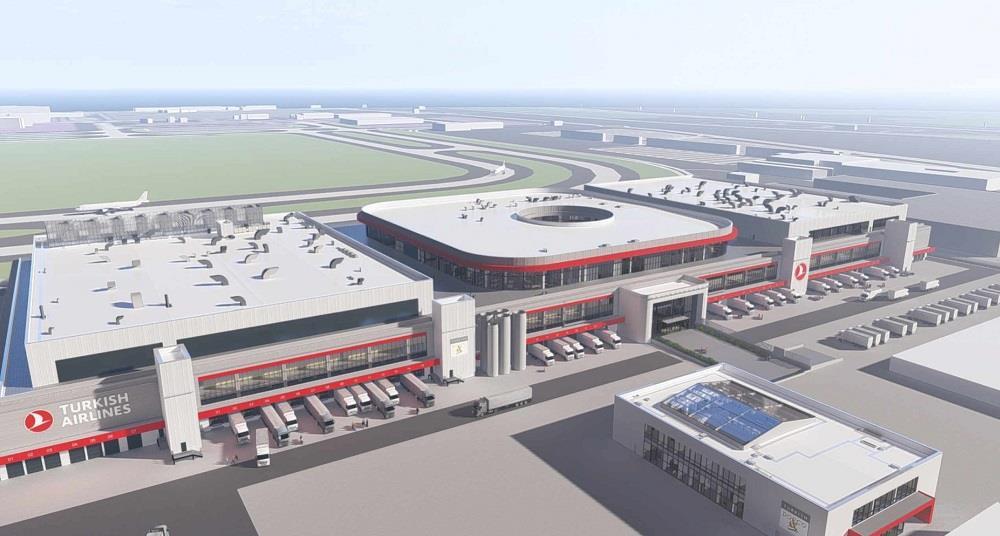Like cultivating fine wine: Strongest technologies to shape next-generation single-aisle
Company
Legal Links
Contact
- +44 7947 753363
- contact@skylineairporttransfers.co.uk
- 6 Walsall Street Bilston Wolverhampton WV14 0AT
Recent Posts
© Skyline Airport Transfers. Created by![]() Beaphoenix WebDesign ltd
Beaphoenix WebDesign ltd
Popular Locations:
Birmingham: Aston, Bournville, Edgbaston, Erdington, Great Barr, Hall Green, Handsworth, Harborne, Northfield, Quinton, Soho, Sutton Coldfield, Amblecote, Brierley Hill, Coseley, Cradley, Gornal, Halesowen, Kingswinford, Lye, Netherton, Sedgley, Stourbridge, Quarry Bank, Bearwood, Blackheath, Cradley Heath, Great Bridge, Old Hill, Rowley Regis, Smethwick, Tipton, Tividale, Wednesbury, West Bromwich, Balsall Common, Bickenhill, Castle Bromwich, Chelmsley Wood, Dorridge, Elmdon, Hampton in Arden, Kingshurst, Knowle, Marston Green, Meriden, Monkspath, Hockley Heath, Shirley, Aldridge, Birchills, Bloxwich, Brownhills, Darlaston, Leamore, Palfrey, Pelsall, Pheasey, Shelfield, Streetly, Willenhall, Bilston, Blakenhall, Bushbury, Compton, Ettingshall, Heath Town, Oxley, Penn, Tettenhall, Wednesfield, Burntwood, Lichfield, Cannock, Rugeley, KIDDERMINSTER, Brierly Hill,
STOURPORT-ON-SEVERN
Coventry: Allesley, Binley, Keresley, Stoke, Tile Hill
Leicester: Abbey Rise, Ashton Green, Aylestone, Beaumont Leys, Bede Island, Belgrave, Blackfriars, Braunstone, Braunstone Frith, Bradgate Heights, Clarendon Park, Crown Hills, Dane Hills, Evington, Evington Valley, Eyres Monsell, Frog Island, Goodwood, Hamilton, Highfields, Horston Hill, Humberstone, Humberstone Garden, Kirby Frith, Knighton, Mowmacre Hill, Netherhall, Newfoundpool, New Parks, North Evington, Northfields, Rowlatts Hill, Rowley Fields, Rushey Mead, Saffron, Southfields, South Knighton, Spinney Hills, Stocking Farm, Stoneygate, St. Matthew’s, St. Mark’s, St. Peters, Thurnby Lodge, West End, West Knighton, Western Park, Woodgate
Derby: Matlock, Ripley, Ashbourne, ILKESTON, SWADLINCOTE , BURTON-ON-TRENT, BAKEWELL,
ALFRETON, BELPER, HEANOR
Telford: Market Drayton, Newport, Shifnal, Broseley, Much Wenlock
Stoke: Stoke-on-Trent, Newcastle, Leek, Uttoxeter, Stone, Stafford
Worcester: Worcester, Droitwich, Pershore, Broadway, Evesham, Malvern, Tenbury Wells
Gloucester: Gloucester, Cheltenham, Stroud, Cirencester, Tewkesbury, Badminton, Berkeley, Blakeney, Chipping Campden, Cinderford, Coleford, Drybrook, Dursley, Dymock, Fairford, Lechlade, Longhope, LydbrookLydney, Mitcheldean, Moreton-in-Marsh, Newent, Newnham, Ruardean, Stonehouse, Tetbury, Westbury-on-Severn, Wotton-under-Edge.
Nottingham: Nottingham, Sutton-in-Ashfield, Mansfield, Newark, Southwell, Grantham, Sleaford
Leicester: Leicester, Hinckley, Loughborough, Melton Mowbray, Oakham Market, Harborough, Lutterworth, Wigston, Ashby-de-la-Zouch, Ibstock, Markfield
Oxford: Oxford, Kidlington, Chipping Norton, Thame, Wallingford, Didcot, Wantage, Abingdon, Banbury, Carterton, Woodstock, Bicester, Witney, Chinnor, Watlington
Chester: Chester, Deeside, Bagillt, Buckley, Holywell, Birkenhead, Preston, Wallasey, Wirral, Neston, Ellesmere Port, Prenton
Airports we serve:
BHX: Birmingham Airport
EMA: East Midlands Airport
LHR: London Heathrow Airport
MAN: Manchester Airport
LGW: London Gatwick Airport
LTN: London Luton Airport
SOU: Southampton Airport
BRS: Bristol Airport
LPL: Liverpool John Lennon Airport
LCY: London City Airport
STN: London Stansted Airport



As befits the Paris air show, Airbus’s head of future programmes likens the technology selection strategy for a next-generation single-aisle aircraft to the cultivation of grapes for fine wine.
“In the early phase of the year, you let the wine stock grow different branches,” said Bruno Fichefeux, speaking to FlightGlobal at Le Bourget.
“The [viticulturist] comes and look at the different branches that grew and picks the strongest one, the one that has more fluid and more strength to bear fruit. And then comes a time of trimming and guiding this single branch that will carry the whole weight of the fruits.
“That’s exactly where we are today. We have different branches going in different direction. We need to look at which one will be the strongest.”
Airbus still has branches to trim in the next-generation single-aisle development – a critically-important process, because the aircraft will succeed the bestselling A320neo.
Fichefeux says the open-rotor engine is the primary driver: the airframer is working on a “very thorough plan” to mature the CFM RISE powerplant, with a tight end-decade constraint, putting the proposed powerplant “under a timeline tension”.
“Otherwise, you could continue to explore and investigate forever – that’s what every engineer likes to do,” he states. “So we are putting that now in a convergence tunnel.”
The engine is one of several technological options under exploration, but Fichefeux is confident that the timelines of other innovations are manageable.
“We don’t see any major technological disruption that would justify us to wait longer,” he says. “Because the other disruption that we bring in the aircraft will be able to come to maturity faster than the engine.”
Fichefeux says the airframer is between the initial exploration phase and the emergence of a potential concept aircraft, which could then be refined through discussions with potential airline customers.
“By the end of this decade, we want to be launch-ready,” he says. “We need to go from technology exploration, to fine-tuning a concept, to prepare the launch and push the button.”
But the aircraft design process, he adds, must run parallel to considerations over the digital infrastructure, industrialisation set-up, and supply-chain readiness, in order to meet ambitions for service entry in the second half of the 2030s.
“Ideally, the earlier, the better,” says Fichefeux. “We are betting on a very disruptive design, and this needs to come to maturity so that we are at the level of confidence to say ‘that’s a concept we bet on – it’s proven, it’s demonstrated, and that’s the design we’re going to pursue down the road.
“We are not yet at that phase because we need to test further.”
The open-rotor engine is gradually advancing – Fichefeux puts it at technology readiness level 3, the stage of experimental proof-of-concept – but he says Airbus needs to “hedge our bets” with other engine options.
While supply-chain choices have yet to be made, Fichefeux says: “On the technologies, there are some decisions that we’ve taken internally and then there are some very big trade decisions which are still open.”
These open decisions include the level of hybridisation – the use of batteries, and adoption of a bleedless or less-bleed architecture – and material choice for the aircraft’s structure.
Composite material for the fuselage has “performance potential”, says Fichefeux, but Airbus needs to determine whether it can reach high production rates and reasonable costs necessary for single-aisle economics.
He adds that the aircraft will also be “more connected, more software-driven” which requires equipment and systems to extract and handle extensive quantities of data.
Fichefeux also points out that crucial decisions need to be made on the level of automation support in the cockpit – potentially employing artificial intelligence – particularly for the “stressful” phases of flight.
“How can I support, automate and assist the pilot in these phases, so that they can focus on piloting rather than managing 10 checklists?” he says. He emphasises that Airbus is still working under the assumption of a dual-pilot cockpit.
Fichefeux says the “jury is still out” regarding the positioning of a next-generation single-aisle in the Airbus line-up, with likely passenger capacity among the multiple decisions yet to be finalised.
But he acknowledges that the A321neo, which has overtaken the smaller A320neo in popularity, would a “good place to start”.
Any successor will need to replicate, or improve upon, the strength of the A320neo family – which has a backlog stretching beyond 2030 – without derailing the vital cashflow for future investment that the current single-aisle generates.
“It’s a very critical decision for the market and for others because it’s our bestselling product,” says Fichefeux. “I think it’s a natural phase in any company to transition between one bestselling product to another.”
Although the A320neo family will continue to be produced “for a very long time”, he states: “There comes, in every company in a situation of success and leadership, a moment to disrupt yourself. And we are exactly in that phase.
“We are in this dual, and not incompatible, [situation] of leveraging the success of the A320 family as long as it takes, while thoroughly preparing the future and being in a position to disrupt it with a much better product. And only once we are convinced we have a much better product will it naturally come.”
Source link
Share This:
admin
Plan the perfect NYC Memorial Day weekend
Pack only what you need and avoid overpacking to streamline the check-in and security screening…
LA’s worst traffic areas and how to avoid them
Consider using alternative routes, such as Sepulveda Boulevard, which runs parallel to the 405 in…
Turkish Airlines embarks on major infrastructure projects including cargo and MRO centres
Turkish Airlines has participated in groundbreaking ceremonies for multiple infrastructure projects including Turkish Technic’s engine…
IAG names successor as finance chief Cadbury steps down
British Airways and Iberia parent company IAG’s chief financial officer, Nicholas Cadbury, is to step…
Nacelle damage to 737 undetected until day after Faro landing incident: investigators
Portuguese investigators have disclosed that a Ryanair Boeing 737-800 flew four flights before the discovery…
US military intercepts Russian-linked oil tanker Bella 1 in North Atlantic
The US military has seized a Russian-flagged oil tanker in international waters off the coast…
Performance indicators feature in revised Russian flight-safety programme
Russia’s government has approved a new flight-safety programme on which it intends to establish a…
BA A380 turbulence probe credits live-weather app with limiting injury risk
UK investigators have highlighted the benefit of access to real-time weather apps, after a turbulence…
Armed Forces of Malta signs deals for extra Beechcraft King Air maritime patrol aircraft and Leonardo Helicopters AW139
The Armed Forces of Malta Air Wing is to expand its fleets of Beechcraft King…
Russia arms Shahed drones with anti-aircraft missiles to target Ukrainian fighters and helicopters
In the latest instance of rapidly evolving drone tactics being used in the Russia-Ukraine War,…
Airlines cancel hundreds of Schiphol flights as winter storms hit KLM and Air France operations
Amsterdam’s Schiphol airport has been besieged by a fierce winter storm, resulting in hundreds of…
Aeroflot Group carries out CFM56 engine repairs at newly-certified in-house MRO division
Russian operator Aeroflot Group has carried out initial repairs to Airbus A320 engines at its…